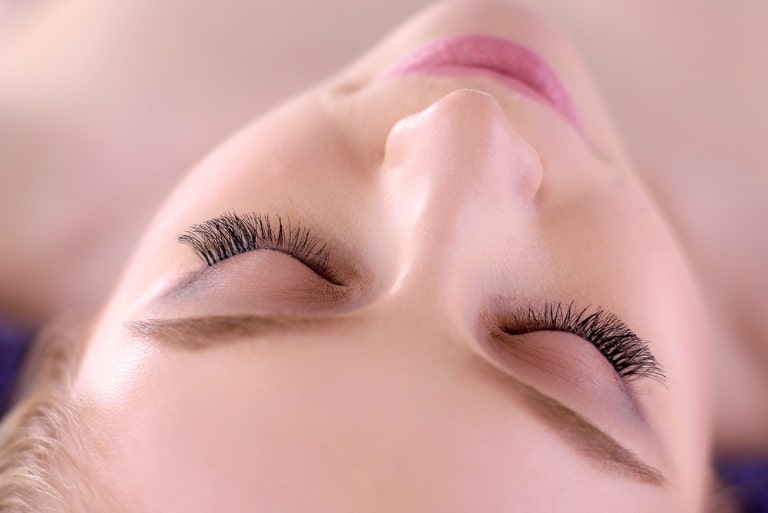What Ingredients Actually Stimulate Eyelash Growth?

Long, full lashes are often seen as a sign of healthy eyes and balanced care, but not all products truly support natural growth. While makeup can create the illusion of volume, only certain ingredients actively influence how lashes grow and strengthen over time.
Peptides, biotin, and specific plant oils are among the ingredients shown to stimulate eyelash growth by nourishing follicles and extending the natural growth cycle.
An effective eyelash growth serum often combines these active ingredients with conditioning agents that protect delicate lash hairs from breakage. Peptides help build the proteins needed for stronger lashes, while vitamins like biotin support follicle health. Natural oils such as castor oil can also play a role by keeping lashes hydrated and less prone to thinning.
By understanding which ingredients actually work, anyone can make informed choices about products that promise results. Knowing what goes into a formula is the first step toward finding a serum that supports healthier, fuller lashes without relying on temporary fixes.
Key Ingredients That Stimulate Eyelash Growth
Several active compounds can influence how eyelashes grow, strengthen, and resist breakage. These include proteins that support follicle health, vitamins that aid keratin production, and prescription-level molecules that extend the natural growth cycle.
Peptides and Amino Acids
Peptides are short chains of amino acids that signal cells to produce more keratin, the protein that makes up eyelashes. Specific peptides, such as biotinoyl tripeptide-1 and myristoyl pentapeptide-17, are often included in lash serums because they encourage follicle activity and help maintain lash density.
Amino acids also serve as the building blocks of keratin. When applied topically, they can strengthen lash fibers and improve resilience against shedding. This makes them valuable for individuals who experience lash thinning from makeup use or natural aging.
Some formulations combine peptides with antioxidants like vitamin E or vitamin C. These protect follicle cells from oxidative stress, which can otherwise weaken lash growth. Including amino acid complexes in a serum ensures both structural support and protection from environmental damage.
Biotin and B Vitamins
Biotin, also known as vitamin B7, plays a key role in converting nutrients into energy and supporting keratin structure. Adequate biotin intake can strengthen hair follicles, reducing brittleness and helping lashes appear fuller over time.
Topical lash serums sometimes pair biotin with vitamin B5 (panthenol). Panthenol attracts moisture and coats the lash shaft, improving flexibility and reducing breakage. This combination supports both follicle health and lash fiber quality.
Other supportive nutrients include vitamin E for its antioxidant effects and plant-derived extracts like green tea or aloe vera, which provide soothing benefits. Oils such as castor oil and coconut oil are also used, with castor oil’s ricinoleic acid content thought to promote stronger roots, though evidence remains limited compared to vitamins and peptides.
Prostaglandin Analogs
Prostaglandin analogs are synthetic compounds originally developed for glaucoma treatment. One example is bimatoprost, which was later found to extend the eyelash growth phase (anagen phase). This results in longer, darker, and sometimes thicker lashes.
These molecules work by binding to receptors in the follicle, altering the natural growth cycle. Unlike vitamins or peptides, prostaglandin analogs actively change lash biology rather than just supporting follicle health.
Because of their potency, they are usually available only in prescription products or regulated cosmetic formulations. Users should be aware of possible side effects, such as eye irritation or skin darkening near the lash line, which makes professional guidance important before use.
How Eyelash Growth Ingredients Work
Eyelash growth depends on the natural hair cycle, the structural proteins that form each lash, and the nutrients that maintain follicle health. Ingredients in serums and supplements target these areas by supporting keratin production, improving follicle function, and reducing breakage.
The Eyelash Growth Cycle
Eyelashes grow through three main stages: anagen (growth), catagen (transition), and telogen (resting). The anagen phase lasts about 30–45 days, and the length of this stage largely determines how long lashes can become.
Ingredients that stimulate follicles during the anagen phase help extend growth time. For example, peptides and vitamins encourage cell activity, which may allow lashes to grow thicker and stronger before entering the next stage.
During the catagen phase, lashes stop growing and the follicle shrinks. Active compounds at this point mainly protect the lash from damage rather than increase growth. The telogen phase is when lashes rest before naturally shedding. Supporting follicle health during this stage ensures that new lashes emerge stronger and healthier when the cycle restarts.
Impact on Lash Strength and Thickness
The strength and thickness of eyelashes depend on proteins and nutrients that reinforce the lash shaft. Keratin, the main protein in hair, provides structure and durability. Ingredients that boost keratin synthesis, such as biotin, can reduce brittleness and help lashes resist breakage.
Peptides also play an important role. They deliver amino acids directly to follicles, supporting the development of denser and more resilient lashes. This can result in lashes that appear fuller over time. Moisturizing agents like panthenol and hyaluronic acid improve lash flexibility. By preventing dryness and brittleness, they reduce premature shedding and help maintain lash thickness throughout the growth cycle.
Conclusion
Research shows that certain ingredients consistently support eyelash growth and strength. Compounds such as biotin, peptides, and panthenol play a role in nourishing hair follicles and reducing breakage.
Other agents, like castor oil and vitamin E, may help condition lashes and improve their appearance. In practice, people often combine nutritional support, topical serums, and protective habits to maintain lash health. Ingredient transparency and consistent use remain key factors in achieving visible results.




